Persian Tar

Persian Tar
Persian Tar is a string or stringed instrument. In these musical instruments a stretched vibrating string produces the initial sound. They are called Chordophones as well. The word "Târ" means string. Persian Tar is also called as "Târ-e Shirâz", the Tar from Shiraz. Shiraz is one of the most important cultural centers of Iran (Persia). Persian Tar is a plucked string instrument,so it means that a plectrum is used to pluck or strum the instrument. Persian Tar is a fretted string instrument, thus the instrument has frets that have been tied on the neck. In my view we can have a Tar family of instruments like Lute family of instruments and I would like preferably count Persian tar as a member of Tar family of instruments, and not Lute family of instruments. Some other instruments of Tar family: Dotar, Setar, Sitar, Caucasian Tar and Guitar.
Play the Video!
Impressions from Iran
Video clips of Iran with Persian Tar performance
Persian Tar Strings
Persian Tar has three courses made up of two metal strings each. The two strings in the first course (the first and second string from down to up) are named the "White Strings", are tuned in unison and made of steel. The two strings in the second course (the third and fourth string from down to up) are named the "Yellow Strings", are tuned in unison and made of Bronze or Phosphor-Bronze. The two strings in the third course (the fifth and sixth string from down to up) have different names and are tuned in an octave or to different tones. The thiner string of the third course is named the "Drone String" and made of steel and the thicker string of the third course is named the "Bass String" and made of Bronze or Phosphor-Bronze. Persian Tar strings are used in different thicknesse or gauges. These gauges are chosen in thousandths of a meter. Here I am going to suggest you some gauges for Persian Tar strings. You can use 0.18 mm or 0.20 mm for the white and drone strings, 0.20 mm or 0.22 mm for the yellow strings and 0.35 or 0.40 for the bass string.

Persian Tar Frets
Pressing a string against a fret determines the strings' vibrating length and therefore its resultant pitch. Persian Tar frets are mostly made of gut, embedded around the neck and located at the points that are determined according to the ears of the musicians. Every fret consists of 3 or 4 threads according to the tradition. The frets are moveable, because we need sometimes to move the frets to get a new arrange of frets. Frets worn down from heavy use can be replaced. The number of Persian Tar frets can be between 22 and 28. I show you in the following picture the frets of my Persian Tar in an Octave. The frets between whole tone and half tone frets representing the micro tones. Some Persian Tar players and makers use frets made of nylon or metal.

Persian Tar Tuning
How to tune the Persian Tar?
The tonal center or the base tone of the starting piece of any "Dastgâh" has a great role in tuning the Persian Tar. We are going to assume that the white strings are tuned in "c". Most of the times the yellow strings are tuned in "g". I am going to call the drone and bass strings as tuning strings, because the tuning of these strings change with choosing a new Dastgah or with playing the same Dastgah from a different base tone. I am going to present here the traditional tunings of Persian Tar. Please pay attention to the order of strings: from left to right white strings (1st, 2nd), yellow strings (3rd, 4th), drone string (5th) and bass stirng (6th). Please consider that the yellow strings are tuned lower than the white strings, the sign "1/4flat" means quarter tone flat and the accidentals are used only to show the intended fret.
Persian Tar Pegs
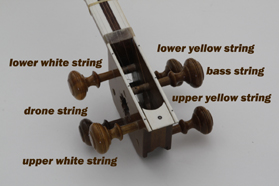
Persian Tar Tunings
Dastgah Mahur
| Base Tone | White Strings | Yellow Strings | Drone String | Bass String |
| C | C | G | C | C |
Dastgah Rast Panjgah
| Base Tone | White Strings | Yellow Strings | Drone String | Bass String |
| F | C | F | C | C |
Dastgah Shur
| Base Tone | White Strings | Yellow Strings | Drone String | Bass String |
| G | C | G | C | F |
Dastgah Nava
| Base Tone | White Strings | Yellow Strings | Drone String | Bass String |
| G | C | G | D | D |
Dastgah Homayun
| Base Tone | White Strings | Yellow Strings | Drone String | Bass String |
| G | C | G | D | D |
Dastgah Chahargah
| Base Tone | White Sstrings | Yellow Strings | Drone String | Bass String |
| C | C | G | C | C |
Dastgah Segah
| Base Tone | White Strings | Yellow Strings | Drone String | Bass String |
| A 1/4FLAT |
C | G | A 1/4FLAT |
F |
Avaz Esfahan
| Base Tone | White Strings | Yellow Strings | Drone String | Bass String |
| G | C | G | D | D |
Avaz Tork
| Base Tone | White Strings | Yellow Strings | Drone String | Bass String |
| B FLAT |
C | G | B FLAT |
F |
Avaz Afshari
| Base Tone | White Strings | Yellow Strings | Drone String | Bass String |
| C | C | G | C | F |
Avaz Abuata
| Base Tone | White Strings | Yellow Strings | Drone String | Bass String |
| C | C | G | C | F |
Avaz Dashti
| Base Tone | White Strings | Yellow Strings | Drone String | Bass String |
| D | C | G | C | F |
You can find some more tunings here
Persian Tar Players
Introduction
Here I am going to introduce only some Persian Tar virtuosi. It includes some important lines about their musical life, a picture and an audio sample. I hope that these informations are going to be helpful, for the Persian Tar lovers, who want to develop their skillfulness in playing the Persian Tar.

Aqa Ali Acbar Farahani - Head of the Persian Tar & Persian Tar Principal Repertoire Dynasty
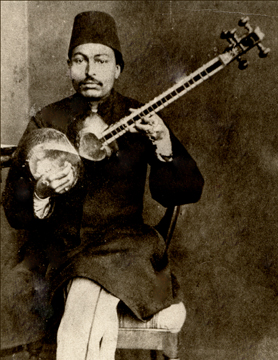
The Picture has been gifted to me (Parham Nassehpoor) by Hutan Ansari, the grandson of Abdol Hossein Shahnazi.
It has been retouched by me as well.
Mirza Hosseyn Qoli
Mirza Hosseyn Qoli (circa 1851-1915), the Persian Tar virtuoso, was the son of Ali Acbar Farahani, the legendary Persian Tar player. He arranged for the Persian Tar, his own interpretation of persian art music repertoire. This musical arrangement shows his Persian Tar playing skillfulness and his deep artistic impression. His son Ali Acbar Xan Shahnazi played this treasure in a most beautiful way with some changes according to his own taste of music.
Play the Music!
Persian Tar Solo
Dastgah: Shur
It is strongly recommended to listen to
⇩ ⇩ ⇩
Mirza Hosseyn Qoli's interpretation of Persian music principal repertoire (Radif) - The Recording
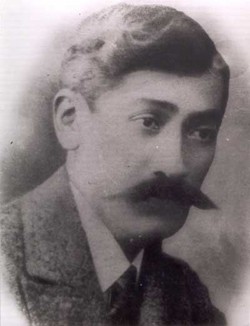
Darvish Xan
Darvish Xan (Qolam Hosseyn Darvish 1872-1926) was a Composer, Persian Tar and Setar player. He was the talented pupil of two Persian Art Music masters, Mirza Hosseyn Qoli (Persian Tar) and Mirza Abdollah (Setar). He went to London and Tbilisi for recording some works of Persian art music. He was one of the first musicians, who developed the music form, Pish Daramad in Persian music. He developed his own interpretation of persian music repertoire.
Play the Music!
Persian Tar Solo
Dastgah: Homayun

Ali Naqi Vaziri
Ali Naqi Vaziri (1886-1979) was a Persian Tar virtuoso, composer and music theoretician. He learned the Persian Tar and the instrumental repertory of Persian art music under Mirza Abdollah and Mirza Hosseyn Qoli. He was the first who published a method for the Persian Tar and suggested a new theory for Persian music, though that does not match the reality of Persian music, but it was a good effort and a starting point for researching about the theorz of Persian music. He tried hard that the music and musicians achieve a new and high social position. He tried to make revolutionary changes in Persian music, but inspired by the theory of Western classical music, because he thought the only way to make a change in Persian music is to create Persian homophonic and polyphonic music.
Play the music!
Persian Tar Solo
Avaz: Esfahan

Ali Akbar Shahnazi
Maestro Shahnazi (1897-1985) was a Persian Tar player and composer. He composed his own persian art music repertpire (Radif), included different rhythmic-metric forms as well. He taught for circa 60 years his father's and his own Persian art music repertoire and educated many Persian Tar players. He recorded his father's interpretation of Persian music instrumental repertoire (Radif) in 1962, which is in my opinion maybe the most beautiful recorded principal Persian music repertoire.
Play The Music!
Persian Tar Solo
Avaz: Abuata
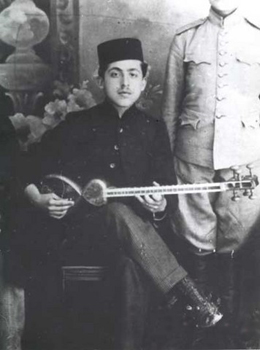
Morteza Neydavud
Maestro Neydavud (1900-1990) was a Persian Tar player and composer. He composed different musical forms like Pish Daramad, Reng and Tasnif (song). Tasnif Morqe Sahar is one of his well known works. His father(Bala Xan) was a Tonbak player. He became familiar with Qamar and discovered her talent as a singer, so he educated her and after that he played and recorded with her several great musical works and Qamar became the most famous female singer of thoses days. Morteza Xan established his own music school and named it Darvish Xan in honor of his master Darvish Xan. He was always grateful and honored because of recording his intrepretation of Persian music repertoire for Persian Tar. He immigrated to the United States of America some months after the revolution (1979) in Iran. He had a special musical expression and articulation, that some people named this as Jewish style. There is no research about this term, but the similar way of playing has been seen by players, who were Jewish as well like Yahya Xan Zarpanje and Soleyman Xan Ruhafza. Please pay attention that these Jewish players have chosen musical family names.
Play the music!
Persian Tar Solo
Avaz: Dashti
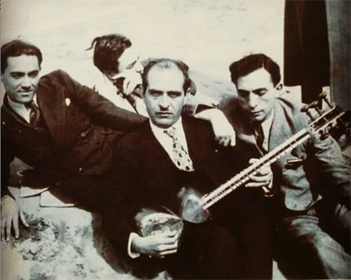
Abdolhosseyn Shahnazi
Abdolhosseyn Xan Shahnazi (1905?-1949) was a Persian Tar player, Mirza Hosseyn Qoli's son and the younger brother of Ali Acbar Xan Shahnazi. He was a child as his father, Mirza Hosseyn Qoli passed away, because of that he learned the Persian Tar and the Persian basic instrumental repertoire, Radif, from his elder brother, Ali Acbar Xan Shahnazi. His style of playing according to his recordings is influenced by Ali Acbar Xan Shahnazi's style, but you can hear clearly and obviously in his playing his own taste of music and creativity. It is said that he changed his style of playing into a new one, that the next generation of Persian Tar players like Maestro Jalil Shahnaz and others was influenced by his playing style. Unfortunately there are no recordings of his new playing style, so that we can have an image or idea about it.
Play the music!
Persian Tar Solo
Dastgah: Segah
Ali Acbar Xan Shahnazi's Repertoire for Persian Tar - Transcription
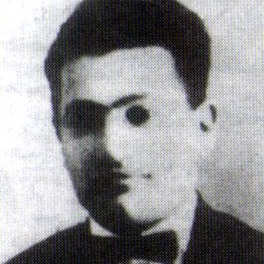
Yahya Zarpanje
Yahya Xan Zarpanje (1897-1932) learned the Persian Tar from Mirza Hosseyn Qoli and Darvish Xan. He comes from a musical family. His father was a song (Tasnif) singer and Dayere (Persian frame drum) player. He was famous as an tireless and persistent Persian Tar practiser. You can discover in his playing as well as in Morteza Xan Neydavud's playing, the special style or taste of playing, which is famous as the Jewish way of playing.
Play the music!
Persian Tar Solo
Dastgah: Mahur
Farhad Arjangi
Maestro Farhad Arjangi (1939-1961) comes from a family with well-known painters in different generatins. He started learning the Persian Tar with the age of 7 under Ali Acbar Xan Shahnazi. He notated Mirza Hosseyn Qoli's and Ali Acbar Xan Shahnazi's instrumental repertoire (Radif) for Persian Tar with high degree of precision. He started to teach at the National Music School when he was only 18. It is a great pity that Farhad, a great musician and Persian Tar virtuoso died at a young age. The audio piece here has been played with some similarities to Ali Naqi Xan Vaziri's playing style.
Play the music!
Persian Tar Solo
Dastgah: Chahargah

Watch The Videos!
Rare videos of his Persian Tar Performance . Dastgah: Abu'ata
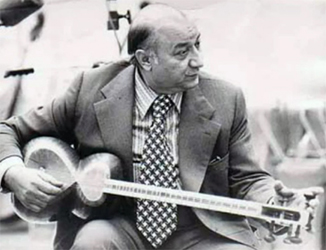
Jalil Shahnaz
Jalil Shahnaz (1921-2013) was a Persian Tar virtuoso. He studied under his brother's supervision, Hosseyn Shahnaz. His style of Persian Tar playing has been influenced by Abdol Hosseyn Shahnazi's style of playing, but it seems that unfortunately there are no recordings of this special style of playing of Abdol Hosseyn Xan to get an understanding of his impact in the next generation of Persian Tar players.
Play the music!
Persian Tar Solo
Dastgah: Homayun

Mohammad Reza Lotfi
Maestro M.R. Lotfi (1947–2014), the Persian Tar player, Setar player and composer. He established the "Sheyda" ensemble and was the ensemble director and soloist. He performed in the Shiraz Festival of Arts. He established with Hushang Ebtehaj (poet) the "Chavosh" cultural centre.
Play the music!
Persian Tar & TonbaK Duet
Dastgah: Segah
TonbaK: Nasser Farhangfar
Listen to the Poem & Music!
Musical Reading
Everlasting Moment
Poet & Poetry Reading: Ehsan Tabari
Persian Tar: M.R. Lotfi
Here I am going to introduce two more similar Persian Tar & Tonbak duets

Play the music!
Persian Tar: Parham Nassehpoor
TonbaK: Peyman Nasehpour
Dastgah: Chahargah
Play the music!
Dastgah: Segah
Persian Tar & Tonbak Duet
In the case that you find the information here productive and worthwhile and you like to support, please play the video below!
I will be thankful for any like, share or subscribe.
Play the video!
Dastgah (Modal System): Rast Panjgah
Persian Tar Solo